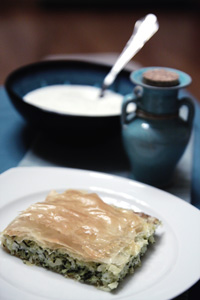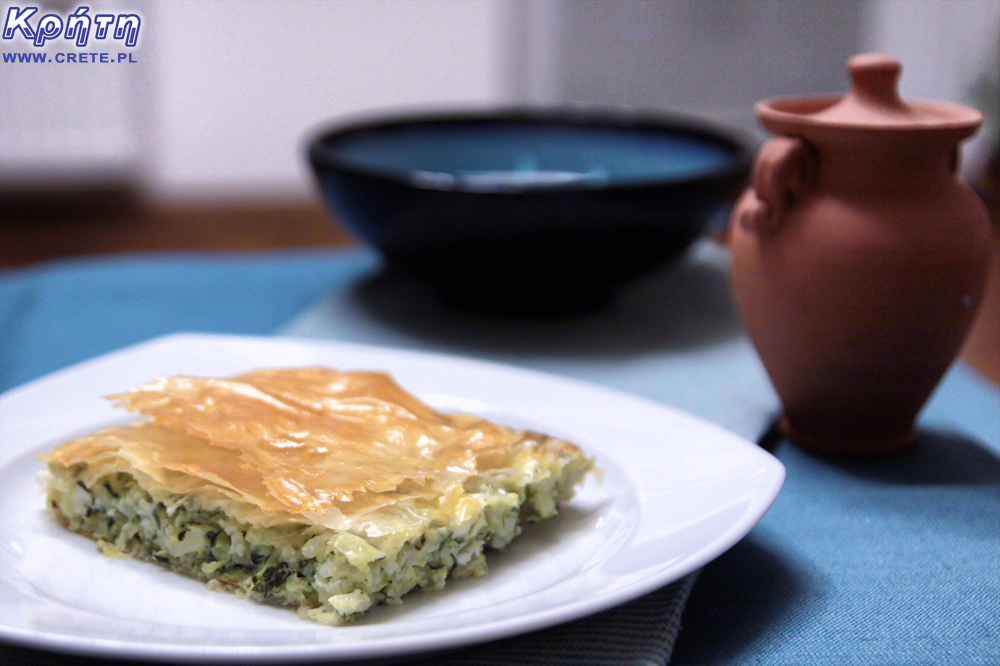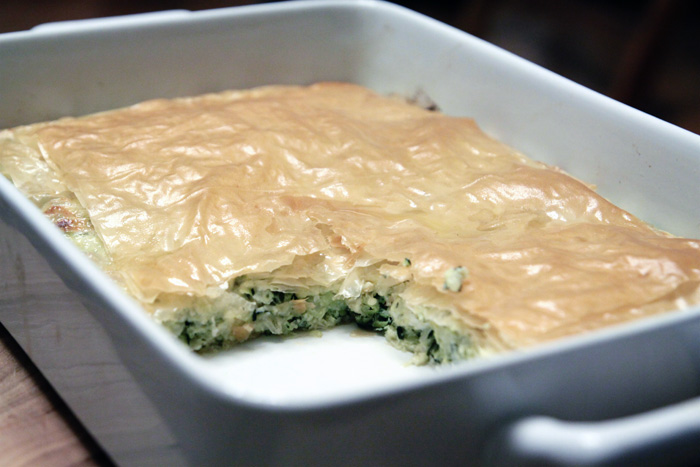

Zucchini in Greek cuisine is ubiquitous. Kolokithopita is a little known Greek way to use this popular vegetable in Poland. Kolokithopita in taste is very subtle and delicate, so combining it with, for example, tzatziki sauce will cause that the garlic contained in the sauce will dominate its taste.
1. The preparation of this dish begins with a clash of unpeeled zucchini without a seed plug on a grater with large mesh. The zucchini should be salted and after 10 minutes, carefully squeezed out of the water.
Heat the oil in a frying pan and add the finely chopped spring onions, fry for about 5 minutes until tender, then pour the rice. Stir and fry for 1 minute so that the rice is covered with oil, then pour in a pan vegetable decoction. Cook on low heat for 15 minutes, so that the rice will absorb the decoction. As the rice will be slightly harder, put together a pan of fire, add zucchini and leave it to cool after mixing.
2. To the cooled zucchini with rice, add the rest of the ingredients: parsley, mint, mixed eggs and crushed feta. Season the whole with salt and pepper and mix thoroughly.
3. Now it's time to prepare a deep form in which we will bake kolokithopita. The inside of the dish must be covered with a thin layer of melted butter. Then apply one piece of filo to the bottom and sides of the dish and then coat it with a small amount of melted butter. A thick silicone brush will be useful for this. In this way, we put in 1-2 more filo sheets, each glued with melted butter.
4. On a dough prepared in this way, we spread the mass with zucchini equally and the protruding edges of the filo pastry wrap into the inside of the mold. The whole is covered with the remaining filo sheets. Remember to lubricate each of them with melted butter. The top layers of the dough can be cut with a knife into smaller squares. This will facilitate the subsequent cutting of the casserole. However, if you do not do it, it will not be bad either.
5. Bake Kolokithopita in an oven preheated to 190 ° C for about 35 minutes, until the dough is browned. We give it hot.



Vegetable pancakes are a specialty of Greek cuisine. The multitude of vegetables available at any time of the year provokes even the ingenious use of them. Tomatokeftedes, or tomato pies, is the recipe that proves this theory. This dish is popular on the Cyclades and in the traditional cuisine of Syros, Andros, Tinos or Santorini. The most characteristic taste of tomatokeftedes is reached by the inhabitants of the latter island due to the specific taste of small tomatoes growing there.

Briam is one of the most famous dishes of Greek cuisine. Depending on the region of Greece, this vegetable casserole consisting of zucchini, potatoes and eggplant has many variants. Even on our site there are two recipes for its preparation. Today we will add another one that definitely surprised us. We ate briam prepared this way in Paleochora in one of our favorite family traditional taverns this year.

Boureki is a very classic Cretan baked dish consisting mainly of two ingredients: potatoes and zucchini. In Cretan taverns you can find it in two versions: in dough and without dough.
Komentarze
komentarz z
Może być jeszcze pita z serem owczym,ze szpinakiem albo serem i szpinakiem☺.Każda pyszna
komentarz z
I wiele innych :) Grecy potrafią w filo przyrządzić chyba wszystko :)
komentarz z
Wiem.Miałam to szczęście ,dzieciństwo spędziłam wśród nich. ☺
Wypełnij poniższy formularz aby dodać komentarz
lub kliknij w poniższy link aby skorzystać z możliwosci komentowania przez facebooka:
https://www.facebook.com/crete.poland/posts/10153926709497551